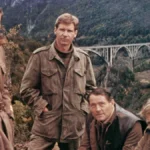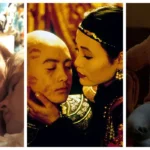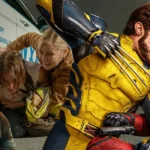VIKINGS, THE WITCHER and HOUSE OF THE DRAGON are sourcing in Żyrardow. Interview with Michał Siedlecki who works for Hollywood
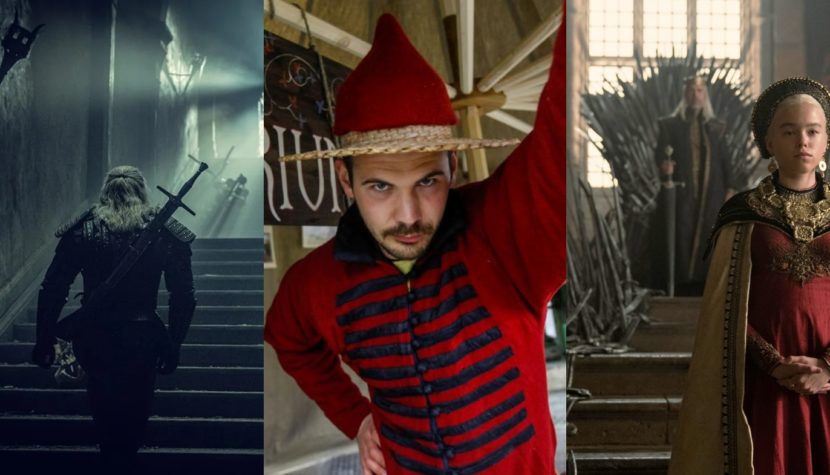
Michał Siedlecki is 39 years old, has two children and his own sewing and carpentry workshop in Żyrardów. School was never on his priority. He studied several subjects, but did not have the patience (or the time) to finish any of them. From an early age, his attention fled towards history and fantastic worlds. So he started doing historical re-enactment, then sewing tents, and finally… creating sets for Hollywood producers. We have seen his tents, furniture and props in, among others, Vikings and The Witcher. Soon, his works will be seen in House of the Dragon, Tim Burton’s Wednesday and Ridley Scott’s Napoleon. How has he been able to achieve this? How does he collaborate with Hollywood production designers? And what does Robert Eggers owe him? He told us all about it at the cutting table in his spacious workshop in Żyrardów.
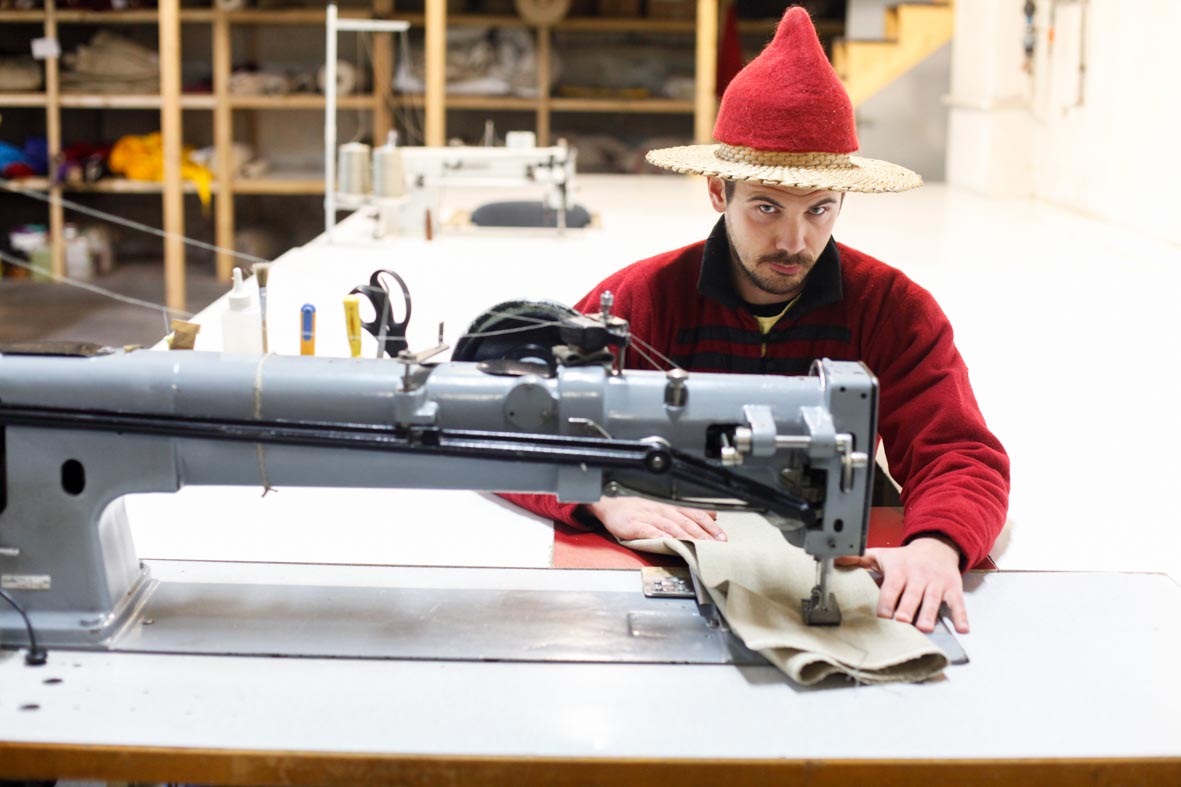
Natalia Hluzow: The Witcher, The Northman, Vikings, Cursed, Wednesday, House of the Dragon… This is just the beginning of the list of productions in which we have been able or are yet to see the designs your produced. Before we move on to how it came about that you started working with Hollywood studios, please tell us how it all started.
Michał Siedlecki: It started with re-enactment. And even earlier with fantasy and history. The first were strategy games that we played with friends. We recreated various battles – the Battle of Grunwald and the Second World War. They were always historical battles. Then I discovered Tolkien and I fell totally in love. It was the late 1990s, there were no Peter Jackson films yet, I was maybe 16 at the time. There was a craze for Sapkowski then, but The Witcher didn’t appeal to me. The Lord of the Rings was something special. It was real art.
It wasn’t long before the opportunity to go to my first historical event arose. Back then there were no shops with historical ‘gadgets’ like today. Shoes, clothes – we made everything ourselves. Given taht we had nowhere to sleep, I came up with the idea to sew myself a tent. It was a bit of a tall order, but I figured I’d give it a try. The tent wasn’t perfect, but it worked out so well that I was able to sell it later. So it all started with the tent. And then somehow it just went on from there.

Related:
NH: It went on and it didn’t stop with the tents. Tentorium.pl is not the only company you run, is it?
MS: That’s true. Initially we did everything ourselves, me and a colleague. There weren’t many orders. When we started sewing these tents for a living, it was maybe four tents a month. It quickly became apparent that customers wanted not only the tent itself, but also the poles. So I decided to set up my own carpentry shop. And since I already had a carpentry shop, we also started making furniture. Over time we found out, that if we were able to make a chest or a bed, we were also able to make, for example, a paddle or a throne, or a sculpture, or even an igloo, a submarine or a spaceship… And that’s how, with these tents, another division of my company was born, actually a separate brand Joinery.pl
NH: And you also create these spaceships and submarines for films?
MS: No, no. All the film and series projects we have made so far have been within the framework of historical and fantasy cinema. But we also prepare props, set decorations, mock-ups and tents for commercials, music videos and TV shows. We also continue to fulfil individual orders. Mainly for people from re-enactment groups, but there are also orders completely unrelated to history.
NH: I see. So let’s go back to films and history. Your history. Now is the right time to reveal how a carpentry and sewing company from Żyrardów came to have such a portfolio? How did you get your first big project and what was it?
MS: For the record, I’m originally from Radom and it was there that I took my first steps, still sewing on a Łucznik machine. I later moved to Kraków to study and there, in 2008, I founded my company Tentorium.pl . After a few years, I decided to settle closer to Warsaw, so I bought a house near Żyrardów. This is also where I moved my company. Unfortunately, my Cracovian employees, and I employed four of them at the time, didn’t want to follow me to the other end of Poland (laughs). So I had to start everything from scratch, so to speak.
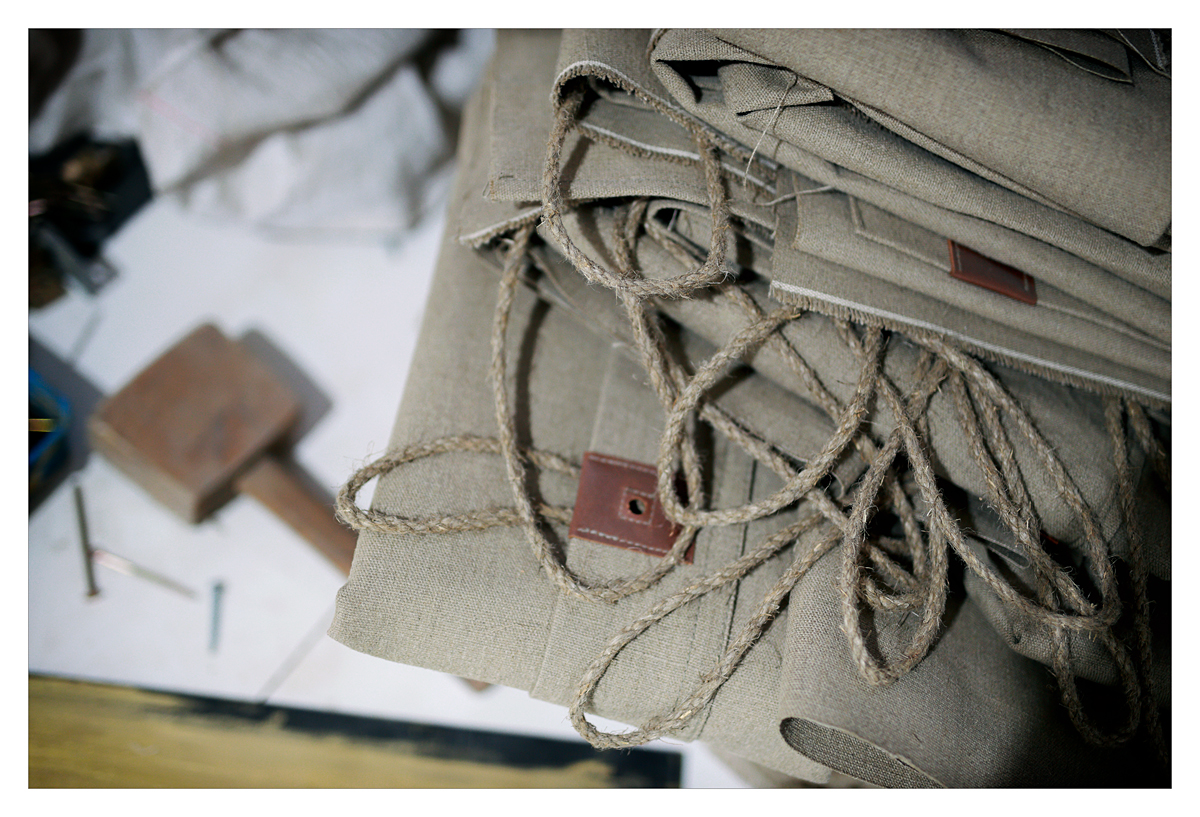
I rented a 200-square-metre space in Żyrardów, where I set up my studio. It was 2012. I had just hired my first employee when an order came in from the History Channel. It was an order for three giant Viking tents. Apart from what kind of tents they were going to be, not much else was known about the order. Viking tents and the History Channel logo on the order – that was all I knew. I immediately thought they were probably making a fictionalised documentary – a low-budget TV re-enactment of some battle. This sort of thing could often be seen on Discovery or just the History Channel. It has never occurred to me that this could be about some spectacular historical series. Especially as there weren’t many of them back then. I remember mostly Rome from those days.
NH: And yet…
MS: And yet it turned out that I was wrong. But you know, I was such a small player back then that I didn’t think in those terms. They ordered three big tents. They gave a horrendously short deadline (less than two weeks). So I even had a dilemma whether to take this order or not to take it. Importantly, the first employee I hired happened to be a carpenter, so I couldn’t count on any help with sewing. But in the end I took the job. The carpenter made the poles for the tents in two days, and I (alone) spent two weeks, including weekends, cutting and sewing for several hours a day, and eventually it worked. We shipped. It arrived. They thanked us, they were super happy.
Ten months later, the order was long finalized. And then the first adverts for the Vikings series started to appear and a light bulb went on in my head. But I thought to myself ‘no, that’s not possible’. But I still couldn’t get over it, so I started checking on the web – the address of the studio was right, the names of the producers too… But I still couldn’t believe it. Finally, the first episode appeared. No tents. The second – no tents either. I thought I was dreaming. But in the third episode finally there were tents… So to answer your question – Vikings was my first film assignment, although at the time I had no idea, that I was working on Vikings.

NH: And have you tried to ask how it came about that the History Channel chose you? How did the American TV station reach the guy from Żyrardów? How did they know he was making historical tents?
MS: Yes. A few weeks after the premiere of the series, it was announced that there would be a second season.
And for this second season they had already ordered more tents, forty pieces. And then I already knew who I was working for and what I was working on. I asked them later how they found me. After all, my brand was not known in the film industry. It was only known among re-enactors. And it turned out that they were the ones who arranged the assignment for me.
The producers of Vikings employed re-enactor groups as extras. It paid off, because these are people who immediately came in “full war gear”, they had beards, knew how to swing a sword… And when the set designers needed something from the time period, they went to them and asked. And when the question was who sews the best tents, they replied that of course Tentorium.pl . And that’s how they got to me. The cooperation with the Vikings team was very good, it paid off and from one order ten more were conceived.
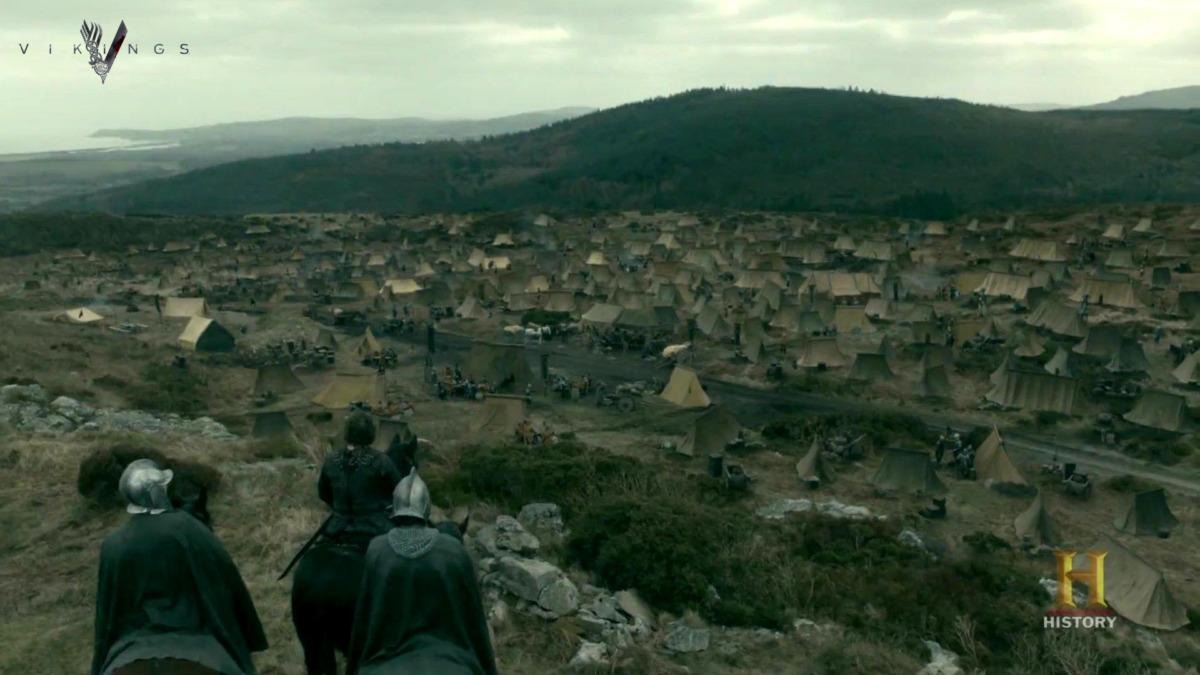
NH: And the company has grown.
MS: Yes, but not to some skyrocketing size. I promised myself that I didn’t want to grow the company more than I could handle on my own. The moment I would no longer be able to handle clients personally and would have to hire extra people for the office, that would mean it would be time to stop. I don’t want to turn Tentorium.pl into a corporation. I don’t want my company to be a factory. I’m interested in craftsmanship, individual pieces, super-detailed props, not a thousand of the same off the line. Right now there are 7-8 of us and for me that’s the limit.
NH: So you mean to tell me that here, in Żyrardów, just 8 people created the set design for The Northman, The Witcher, Napoleon…
MS: Yes. Not the whole set design, of course. It’s not that everything you saw in The Northman came from us. Several teams worked on elements of the set design for that film. But all the boxes are ours, nearly all the furniture is ours. The oars that little Amleth paddles with as well. In fact, most of the furniture and props featured in the film are our creations. And of course all the tents too.

NH: That’s right, I wanted to ask you about The Northman in particular, because all the media mentioned how Robert Eggers took care of the historical details and the conformity of the smallest elements to the reality of the period. Was this actually the case?
MS: Absolutely. And that’s what makes The Northman the most difficult and at the same time the most interesting project I’ve been involved in. I often encounter projects where the production, in order to cut the budget, says – ‘ah, after all, you won’t be able to see on the screen whether it’s leather or some cheap material’.
And here there was more attention to detail than in the museums. And I know what I’m talking about, because we make tents for museums all over Europe – mainly in Scandinavia, but not only. With Eggers, the beds had to be made of one board. It couldn’t be that something was glued together. It had to be axe-chopped . There could be no saw marks. We even sent photos of the furniture to them for approval, to check that the number of decorative holes was ok. We also made tents for them, about eighteen pieces. And they were boat tents, which also has an interesting story attached to them.
NH: So maybe explain what boat tents are?
MS: Well that’s what the story is about. The Vikings were very practical and comfortable, they travelled everywhere by boat. They didn’t walk, they didn’t ride horses. They pitched their tents on the boats and slept there. When they reached the shore and wanted to spend a few days somewhere, four of them would take such a tent and carry it all the way ashore. And when they were getting together to go further afield, they could, within five minutes, put that tent tent back on the boat and go on.

And it turned out that no one on the set knew that. When they got these boat tents from us, they started messing with them. When I saw the photos from the set, I told them straight away what they were doing wrong. I described how they worked, what they were used for, how they were moved and explained that they could pitch them on the boat, that that was the point. They not only accepted this and thanked me for the guidance, but they really liked the idea. So the tent pitched on the boat in the scene where Olga and Amleth are sailing to Iceland during the storm is the result of my tip. That’s to my credit.
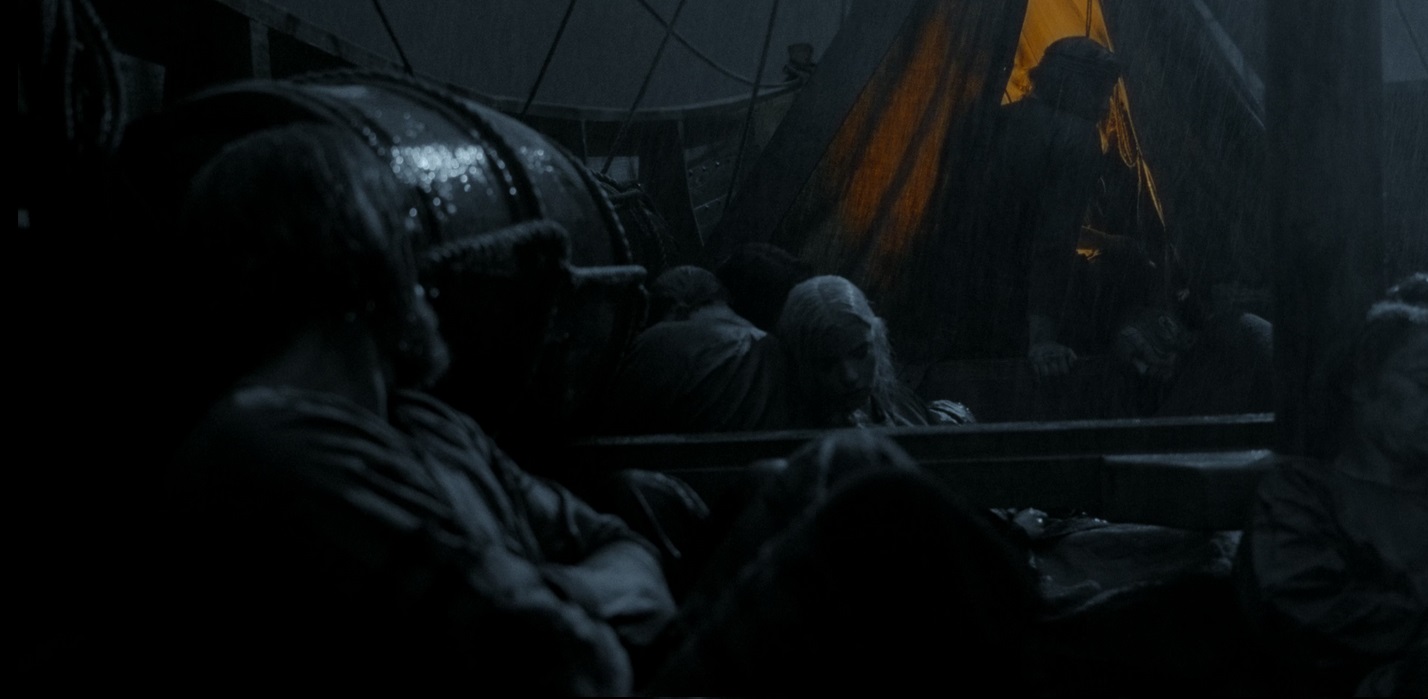
The second credit I give myself is for the throne. It was actually one of the pieces of furniture that we didn’t make, but I was the one who told the set designers that such a throne existed in those days. I sent them materials and information. And they liked it so much that they put it in the film.
NH: One might be tempted to say that you were not only a performer of the set design elements, but also one of Eggers’ historical consultants.
MS: Exactly. You know, when I get designs from the crew, I always sit with my guys for a few days and we look for mistakes in those designs. Later I send the crew a series of questions and tips. People working on big overseas productions are usually very grateful for that, that we have found these mistakes.…
NH: …and as if you didn’t find them, the viewer surely would.
MS: Exactly. Or the construction would have fallen apart. Because these are consultations not only about historical fidelity. They’re also purely practical comments – a board too thin, a board too thick, that’s going to collapse.…
NH: Ok, but in that case where does your knowledge come from? After all, you don’t have a degree in history, you didn’t study architecture, construction… Do you learn it on the fly, for each project? Or do you just know it all along?
MS: At the time when I started dabbling in re-enactment, it was impossible to buy ready-made costumes or equipment from the period. So I accumulated knowledge by preparing all these props for myself. I was interested in the early Middle Ages, the religion of the Slavs… And since the first tent findings date back to the 15th century, I gained knowledge from studying iconography myself.
Without this knowledge, I wouldn’t be as good at what I do. For example – the original 9th century beds we made for The Northman were 160 cm long. If I didn’t know the history, I might think someone had made a mistake, redrawn something wrong. But I know that people, firstly, were shorter back then and secondly, they slept in a semi-sitting position. With this knowledge I am able to do my job well. There were many more such details. And the great thing with the Eggers team was that they wanted to listen, they wanted to learn. They said – ‘You have experience, you know this, advise us how you would do it’. And not ‘you’re a guy from Poland, so sit there, sew and be quiet’. It’s great to work with people with this kind of attitude, people who attach importance to such things. This is still a rarity today, but cinema is moving in the right direction.
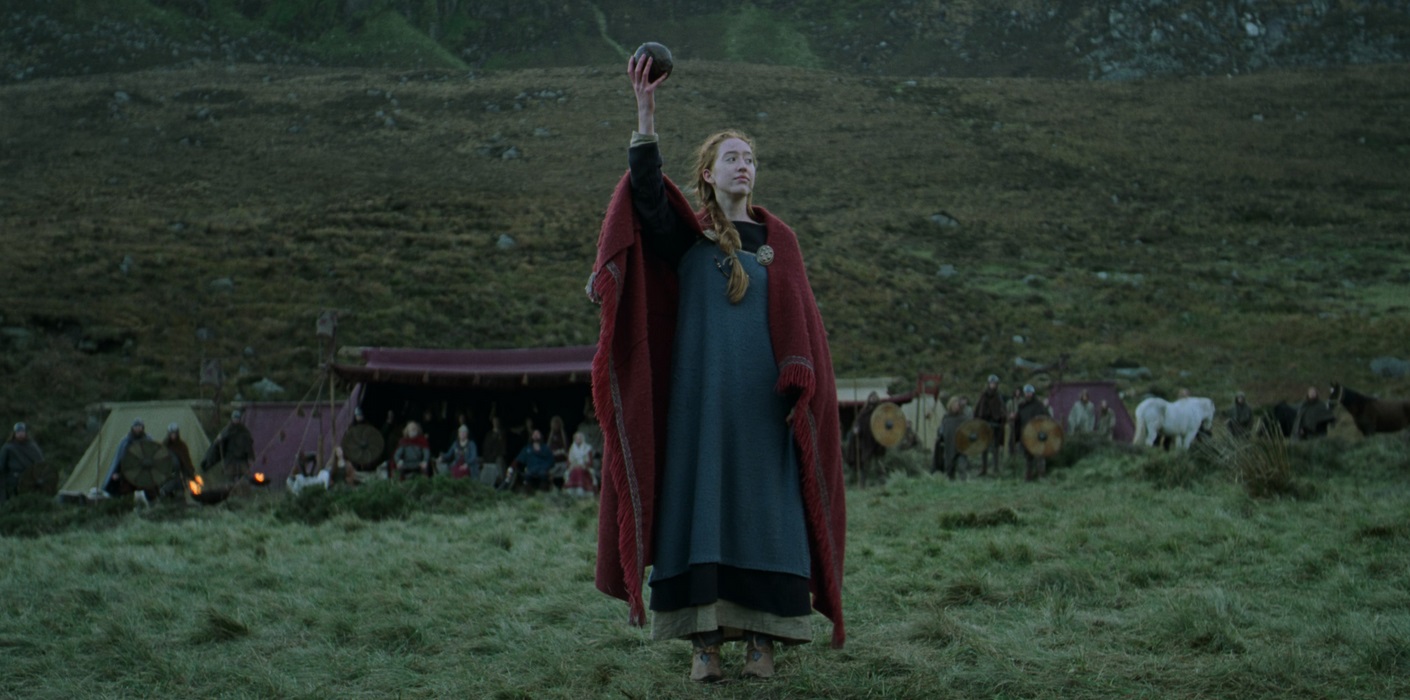
A colleague of mine, who has been involved in re-enacting ancient Rome for 40 years, has been a consultant on Barbarians. He really is an expert, with specialized knowledge. And it’s great that film crews today are turning to such consultants, rather than academic lecturers who wrote one book on the subject 30 years ago.
NH: In short – working on The Northman made you feel fulfilled. And how did you like the film itself?
MS: I was very impressed with the end result. First of all because of its fidelity to the realities of the time. It’s not just the set design, but also the fact that they speak like people from a thousand years ago, they are dirty, through the screen I can feel that this whole world stank. What’s more, thanks to this film even I learned something new, after 20 years of dealing with this subject matter. What the Valkyrie had on her teeth in the funeral scene is authentic period decoration. Everyone on the internet was mocking them saying ‘what’s that brace on her teeth’, and yet it was historically justified.

It was a beautiful thing for me that there were no idiocies in this film, like in many other historical productions. And I pay a lot of attention to that. I’m able to notice if something is made of wool or some other material, if it was hand sewn or machine sewn…. And unfortunately it’s often the case that set designers don’t so much not know what it should look like but don’t give a damn.
For example, in The Last Duel, Matt Damon’s character’s helmet is an invention of the filmmakers. Nobody would go to battle in something like that in those days. I understand the need to show the actor’s face, but it has nothing to do with history. Of course, one can catch some ‘mistakes’ in Eggers too. For example, the fact that the protagonist wears langseax (Old German one-edged fighting knife – ed. note) on the front and not on the back, as it was actually carried. But I understand that it was all about effect and such minor inaccuracies are acceptable to me. Eggers knows exactly where that impassable line is, beyond which historical cinema already ends and some fantasy begins.
NH: So let’s move on to fantasy. After all, The Northman is not your only important work. You also worked on Netflix’s The Witcher.
MS: There is an interesting story connected to The Witcher, because it was the only project I got involved in on my own. I found out that one of the producers was Tomek Bagiński, so I wanted all the more to have a part in this project. I decided that ‘the world belongs to the brave’ and started looking for Baginski’s contact details. By then I had quite a few friends in the film industry, but no one had a phone number or email address for him. He was a ghost. And someone finally told me that Bagiński runs his Facebook fanpage himself. I didn’t want to believe it, but I wrote and it turned out to be true. I was so keen to be a part of it that I even wanted to sponsor this work of mine for them, but Bagiński laughed at me then and said that after all, there is a budget and I’m not supposed to joke around. He told me to wait and so we waited for six months. Just when I was beginning to think they’d forgotten about us, an email arrived saying ‘We want tents. For next Friday.’ I was a bit furious at the time, but we did everything sticking to the deadline. We sewed all weekend to send the tents on time to Budapest. Then they made the second season already in the UK and used the same tents. And while they were working on the third season, there was some confusion, the team changed and eventually our collaboration didn’t happen. So next season our tents will not be there. Alternatively, there will be the old ones again.

NH: When we spoke before the interview, you also mentioned Ridley Scott’s Napoleon, which will hit cinemas in 2023. That’s a big undertaking that also required a lot of work from you.
MS: Yes, Napoleon is definitely the biggest assignment I’ve had the opportunity to work on so far. It also coincided with several others, which almost required superpowers. But it also helped me get back on my feet. The lockdown associated with the COVID-19 pandemic was a difficult time for us. I had to let some guys go, it was very hard – they shut down films, commercials, historical events. But when it got going again, we had a hard time keeping up.
First the Northman fell into our laps, then The School of Good and Evil’, where we made dozens of pieces of furniture in a few weeks. I remember my staff saying that we couldn’t make it in such a short timeframe. But the latter was realised by practically the same team as The Northman, and I really like these people, so I didn’t even hesitate. And we did it. Then Barbarians fell in, Dungeons and Dragons, the first commission from Ridley Scott and then there was Pilgrim, which was the working title of Tim Burton’s Wednesday. And just as we were finishing the Burton order, another one rolled in from the Napoleon team – this time for a whole army of tents. And we did it all in seven people, over six months. At that time we were really working at such capacity that I didn’t know how to convince the guys to sit that much at work. Of course I convinced them financially, but I also wanted to compensate them somehow. I would also sit down at the machine myself and sew to speed things up. It happened that some of the guys were already loading the tents into the car that came to pick up the order, while the others were still sewing. But it did get done.
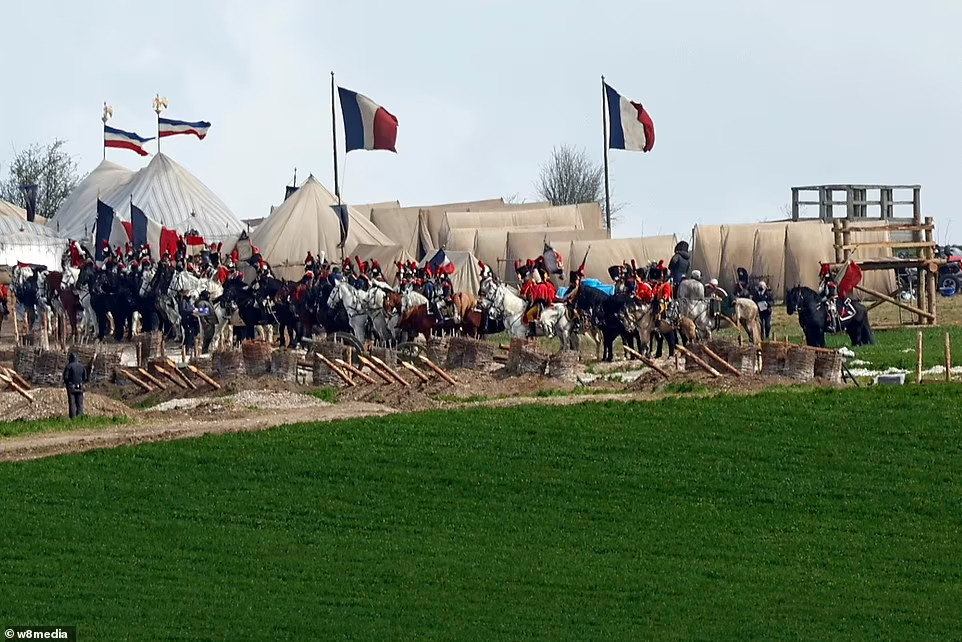
NH: And I understand that you did everything here, on site in Żyrardów.
MS: Yes. We don’t travel to the sets. We do everything here. Here we have the equipment, the threads, the machines, just the whole workshop of 500m2. We send everything out, together with instructions, of course, and the decoration builders build it there. We were actually asked to come to the set, but I couldn’t agree at the time. I regret that, because it was actually Ridley Scott’s set. It turned out that they needed some more huge tents and that they wanted us to sew them there on location, on the set in London.
My fiancée was happy to stay home alone, pregnant and with a small child, she told me – “Go! Opportunities like this don’t come along every day”. But I couldn’t allow it. We were finishing Kraven at the time, with only a few weeks left. If I were to fly out, I’d have to take some of the guys with me, and the best ones at that, so I’d just blow the other project. So I didn’t fly to the Ridley Scott set. We did the tents at headquarters, of course. I was actually more comfortable here, too, because they probably didn’t realise how big an undertaking it was. It’s not just fabric, thread, some first-rate sewing machine. Here on site we have a sewing table of 150 square metres. But of course, I regret not taking this opportunity.

NH: You fulfilled your other dream instead. You’ve mentioned that you’re a fan of Game of Thrones and you managed to snag a collaboration with HBO Max on House of the Dragon.
MS: Yes. And again, it wasn’t even me who caught on, it was them who found me. It was funny because at first I didn’t know what it was about either, because the project had a really bizarre working title. To keep things secret, foreign studios come up with all sorts of weird names. As I mentioned, Tim Burton’s Wednesday had a working title of Pilgrim. Napoleon is Kitbag, But at HBO they have outdone themselves. Suddenly, I get an email inviting me to work on a fantasy series called Red Gun. I think to myself – ‘who came up with the title of the fantasy series RED GUN? After all, it doesn’t make any sense’. The guys and I laughed terribly at this. But then it turned out it was actually House of the Dragon. Another dream fulfilled.
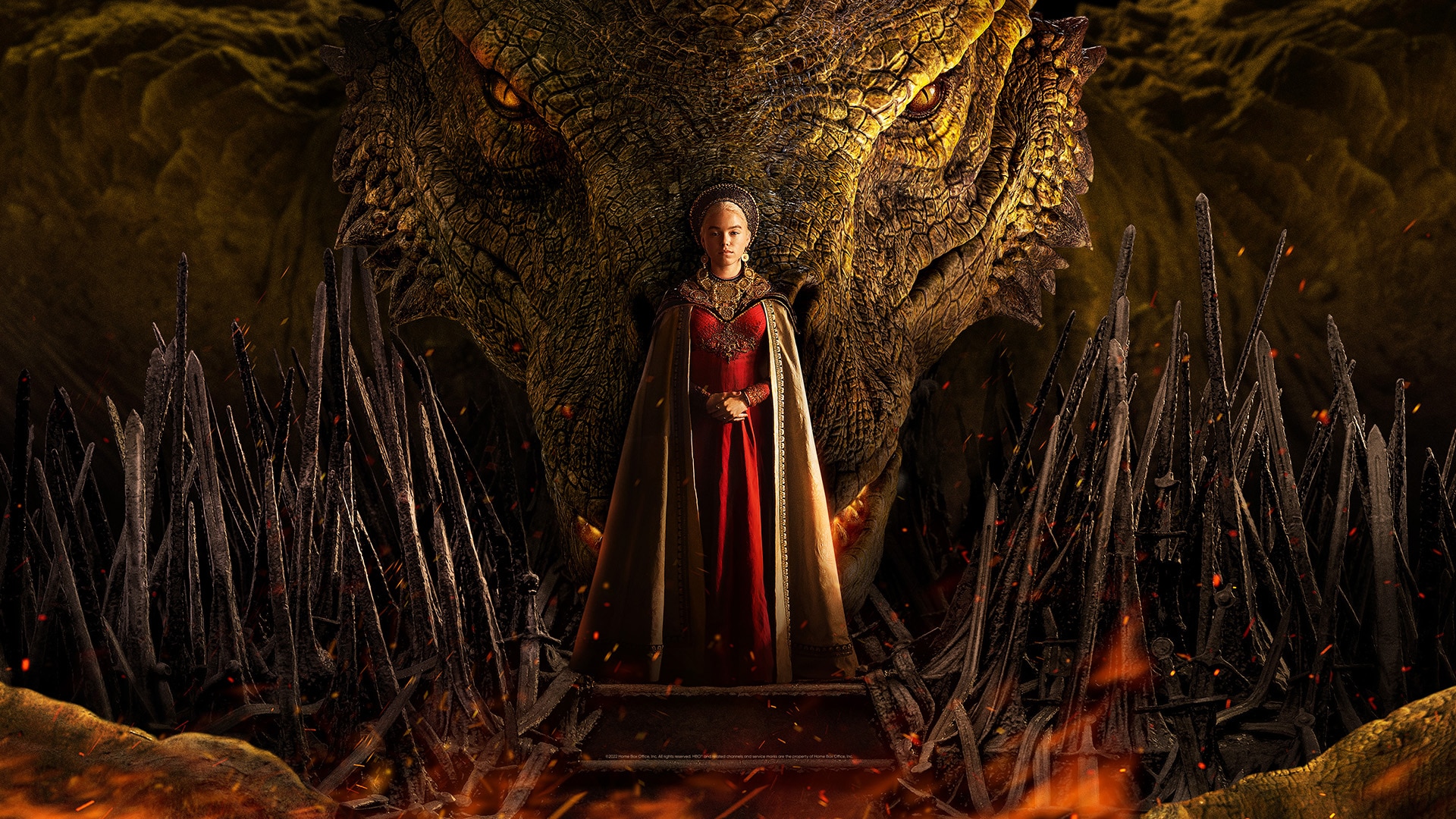
NH: And what realisations of yours will we see in House of the Dragon?
MS: I can’t reveal too much, because we are still before the premiere and I am bound by a confidentiality agreement. All I can say is – look for tent.
NH: Ok, then tell us where else should we look for your tent?
MS: Among the films and series we have worked on that are still waiting to be released are new seasons of Barbarians and Vikings: Valhalla, as well as the already mentioned Wednesday and The School of Good and Evil. All of these are Netflix productions. In addition, we still have the premieres of the theatrical films Napoleon, Dungeons and Dragons and Kraven the Hunter ahead of us. We also worked for the producers of Kleks in Poland, which made me very happy, because the original version of Pan Kleks is one of the films of my childhood. The last project we did was in June. These were props for the Prime Video costume series My Lady Jane.
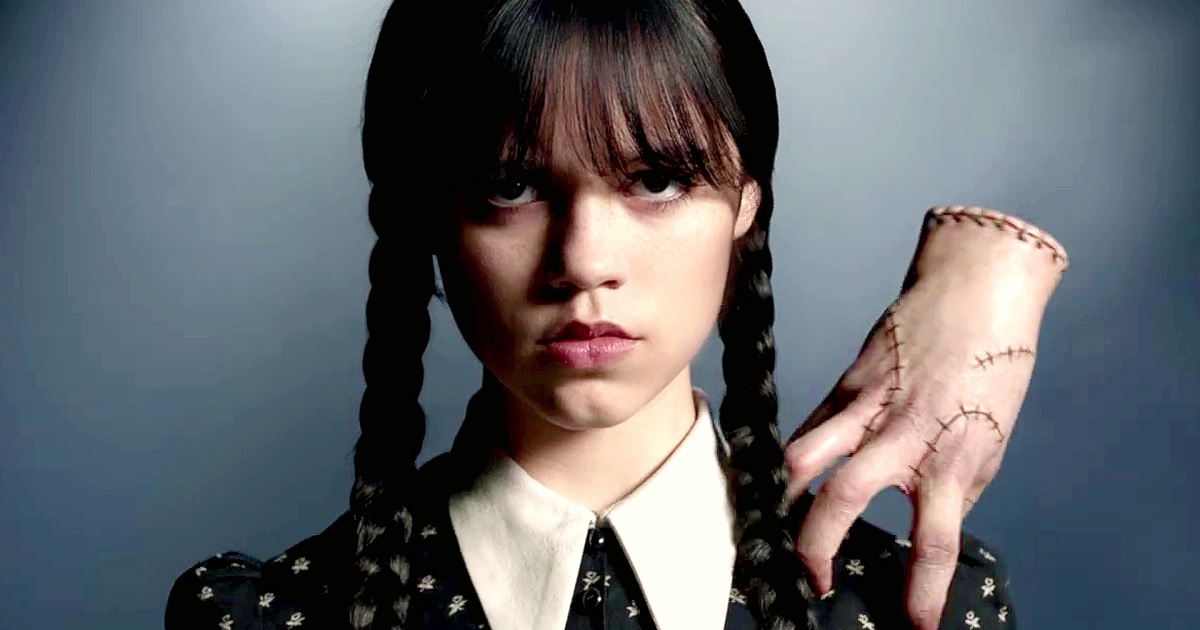
NH: We talked about dreams that have come true. What about the ones you not yet been able to fulfill?
MS: There are plenty. When it comes to dream realisations, I would very much like to do the set design for Thorgal by Rosiński and Van Hamme. There have been repeated rumours that this comic book will be screened. If HBO got down to it, I believe it would be a second Game of Thrones. So, I am waiting for someone to take it on and give me a call.
On the other hand, my other professional dream is an Oscar for production design. I believed strongly in The Northman, but after seeing the film I already know that it is not an Oscar production. But maybe Napoleon…? I think this is something that could catch on in the Oscar race. Of course, I’m aware that I wouldn’t get an individual award and the prize will be scooped by someone else. But I will know that my contribution is there. And then I’ll sculpt the statuette myself, I’ll mould it, I’ll paint it and I’ll have my Oscar too. (laughs)
NH: In that case, I sincerely wish you that. Both an Oscar, and Thorgal. And also the trip to a Hollywood set – maybe not as a set builder any more, but as a historical consultant.
MS: Yes, I would love to go not to set up our tents, but just to advise. That would definitely be something worth experiencing. And maybe I would even go that way professionally… I’m a lucky man, so who knows what life will surprise me with next.



